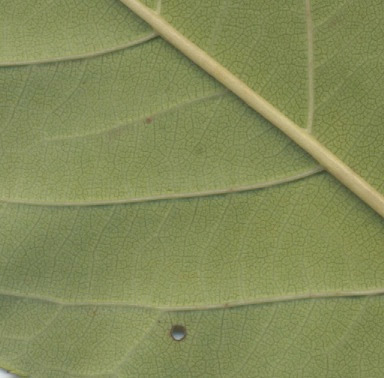Digital print with varnish
Who would have thought that robots are unleashing their own creative spirit and creating original artwork? Harold Cohen, an English abstract painter, became interested in computing and artificial intelligence after a visit to UCSD in 1968. Harold then began his 23 years of research that delved into the development of a rather “different” computer controlled robot that ventured in the world of artificial intelligence. The program is named AARON and the robotic mind is specialized to create art. Aaron, the name of the robot, comes up with several new images during the night. Harold then chooses one of the images Aaron had thought up. For the next couple of hours Aaron gets to work and draws lines, mixes colors, and begins to physically paint abstract imaginary (mind you, not in the same form you might expect to see a human painting in). The robot even cleans the brushes! "AARON can make paintings of anything it knows about, but it actually knows about very little -- people, potted plants and trees, simple objects like boxes and tables, decoration” says Harold regarding the artworks of Aaron.
Harold Cohen quotes, "I wrote it to discover what independent (machine) intelligence might do, given some knowledge of the world and some rudimentary physical capabilities. And, in the process, to have IT teach ME about possibilities I hadn't imagined. I'd be happier if AARON's work in the future were LESS like human work, not MORE like human work."
Aaron is the first robot ever to create an original piece of artwork. The idea came from investigations regarding the natural representations of how human being’s see marks on a paper as a recognizable image (like a shoe) or other known objects from the tangible world. I find it fascinating that a robotic mind can create something new. It almost seems to violate the idea that people are special because we are innovators. If Aaron is able to create the images as seen in this post, I can’t imagine the other possibilities. It’s refreshing when creativity can be made from robotics rather than just scientific output. I am curious, however, as to why Aaron has such a specific style of art. I realize that Harold was the creator, and thus must have the largest influence on Aaron- but, it would be interesting if information from past artists were to flow through the robotic mind. What mixture of art would Aaron come up with then? I do believe that creativity is not as creative as we all may think. It has to come from somewhere in my opinion, much as the same way that Aaron thinks up artwork.
Digital print with varnish

(Screen Print)
Digital print with varnish
References:
http://crca.ucsd.edu/~hcohen/
http://www.kurzweilcyberart.com/aaron/hi_cohenbio.html
http://en.wikipedia.org/wiki/AARON












